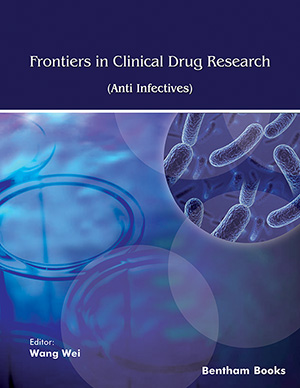Abstract
Background: Psoriasis is a chronic inflammatory autoimmune disease that is considered linked to genetic and environmental factors such as stress. Since the neurotransmitter dopamine has a close association with stress configuration, it can be a candidate for relieving psoriasis representation. In addition to the CNS, immune cells can play a decisive role in regulating immune functions through dopamine synthesis and the expression of its receptors. Altered response of immune cells to dopamine as well as a distorted expression of dopamine receptors (DRs) in immune cells have been reported in some chronic inflammatory conditions.
Objective: This study aims the evaluation of dopamine receptor (DR1-DR5) gene expression in mononuclear blood cells of psoriatic patients in comparison with normal individuals.
Methods: We isolated peripheral mononuclear cells (PBMCs) from blood samples followed by total RNA extraction, cDNA synthesis, and real-time PCR using specific primer pairs.
Results: We found that all types of DRs are expressed in the PBMCs of normal and psoriatic individuals. We also concluded that compared to controls, DR2 and DR4 were overexpressed in psoriasis patients while DR3 was low-expressed.
Conclusion: Increased expression of DR2 and DR4 along with decreased expression of DR3 in PBMCs of psoriasis patients not only provide new insight into the pathogenesis of psoriasis but may also be effective in designing future therapeutic strategies attributable to psoriasis.
Keywords: Psoriasis, dopamine receptors, gene expression profile, peripheral blood lymphocytes, real-time- polymerase chain reaction, mononuclear blood cells.
[http://dx.doi.org/10.1038/s41423-020-0519-3] [PMID: 32814870]
[http://dx.doi.org/10.1016/j.jaad.2020.11.039] [PMID: 33253841]
[http://dx.doi.org/10.1007/s12016-016-8535-x] [PMID: 27025861]
[http://dx.doi.org/10.1016/j.jid.2019.01.026] [PMID: 31010530]
[http://dx.doi.org/10.3390/ijms222111574] [PMID: 34769005]
[http://dx.doi.org/10.22270/jddt.v10i5.4327]
[http://dx.doi.org/10.26444/aaem/112107] [PMID: 32955211]
[http://dx.doi.org/10.1056/NEJM197210122871503] [PMID: 5056734]
[http://dx.doi.org/10.1056/NEJM197210122871504] [PMID: 5056735]
[http://dx.doi.org/10.1046/j.1523-1747.1999.00536.x] [PMID: 10084299]
[http://dx.doi.org/10.1111/1523-1747.ep12345807] [PMID: 8618016]
[http://dx.doi.org/10.1093/hmg/6.5.813] [PMID: 9158158]
[http://dx.doi.org/10.1111/ced.14105] [PMID: 31592542]
[PMID: 19642593]
[http://dx.doi.org/10.1007/s11481-019-09851-4] [PMID: 31077015]
[http://dx.doi.org/10.1007/s10571-018-0632-3] [PMID: 30446950]
[http://dx.doi.org/10.1111/bph.14748] [PMID: 31710717]
[PMID: 17301410]
[http://dx.doi.org/10.1016/j.jim.2019.112686] [PMID: 31634479]
[http://dx.doi.org/10.1016/j.jneuroim.2021.577534] [PMID: 33713941]
[http://dx.doi.org/10.1016/j.npep.2019.102004] [PMID: 31902596]
[http://dx.doi.org/10.1111/imm.13127]
[http://dx.doi.org/10.1111/imm.13109] [PMID: 31424569]
[http://dx.doi.org/10.1016/j.bbih.2021.100199]
[http://dx.doi.org/10.3389/fimmu.2014.00117] [PMID: 24711809]
[http://dx.doi.org/10.1016/j.imbio.2012.11.002] [PMID: 23266246]
[http://dx.doi.org/10.1159/000342140] [PMID: 23051896]
[http://dx.doi.org/10.1111/bjd.19380] [PMID: 32628773]
[http://dx.doi.org/10.3389/fimmu.2017.01767] [PMID: 29358932]
[http://dx.doi.org/10.3889/oamjms.2019.267] [PMID: 31049096]
[http://dx.doi.org/10.1007/s11481-014-9541-5] [PMID: 24682738]
[http://dx.doi.org/10.1016/j.jdermsci.2013.03.008] [PMID: 23639699]
[http://dx.doi.org/10.1182/blood-2006-01-028423] [PMID: 16985181]
[http://dx.doi.org/10.1016/j.jneuroim.2005.07.013] [PMID: 16150496]
[http://dx.doi.org/10.4049/jimmunol.1402898] [PMID: 26363058]
[http://dx.doi.org/10.1159/000330330] [PMID: 21865674]
[http://dx.doi.org/10.1371/journal.pone.0054895] [PMID: 23365685]
[http://dx.doi.org/10.1111/sji.12404] [PMID: 26679087]
[http://dx.doi.org/10.1007/s11481-019-09834-5] [PMID: 30661214]
[http://dx.doi.org/10.1096/fj.04-1652fje] [PMID: 15319371]
[http://dx.doi.org/10.4049/jimmunol.177.11.7525] [PMID: 17114421]
[http://dx.doi.org/10.1016/j.immuni.2019.10.002]
[PMID: 28326743]
[http://dx.doi.org/10.1021/acs.jctc.8b01239] [PMID: 30916958]
[http://dx.doi.org/10.1002/jcc.26053] [PMID: 31441083]





























